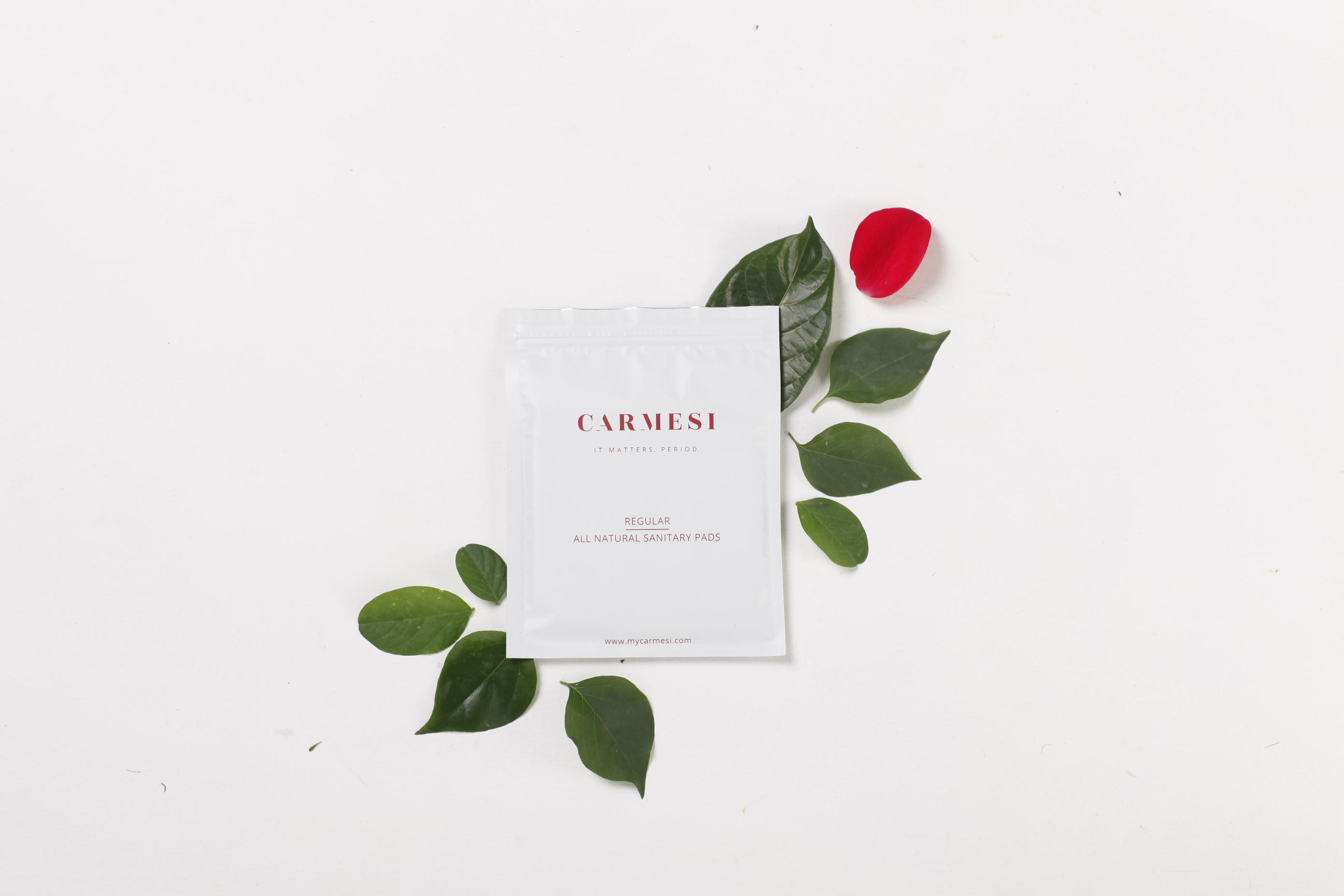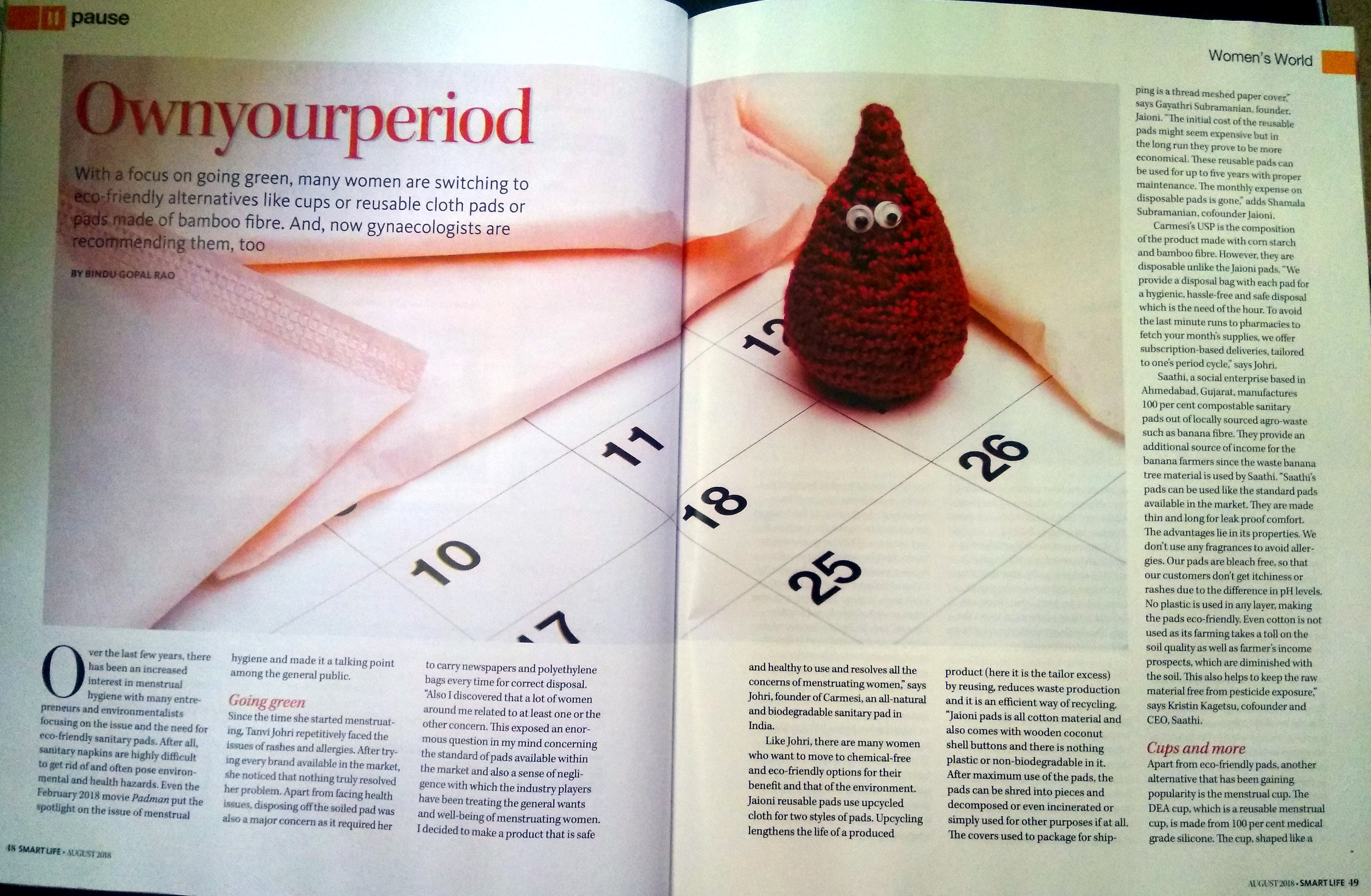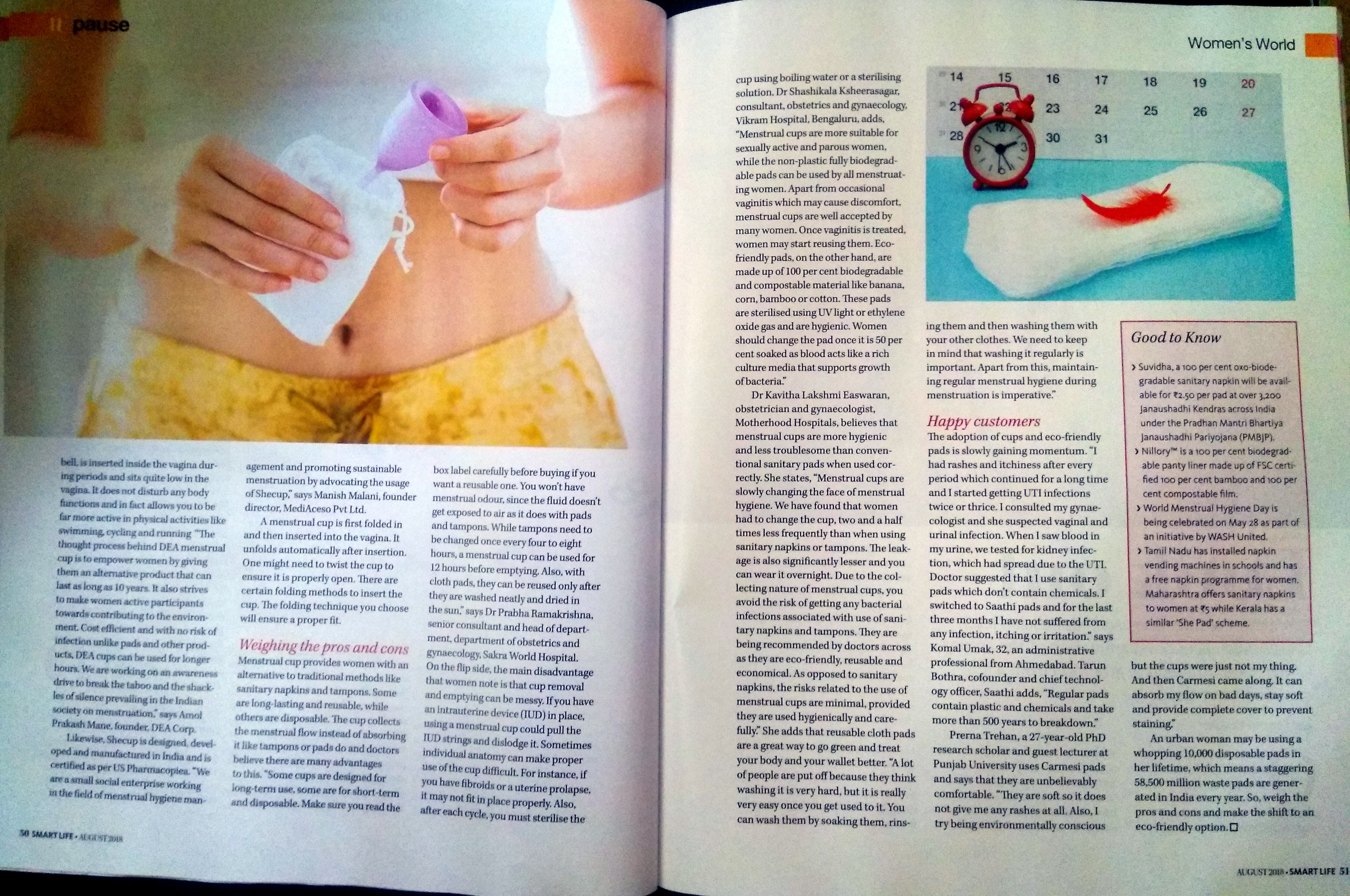Own your period
With a focus on going green, many women are switching to eco-friendly alternatives like cups or reusable pads made of bamboo fibre. But how good are they from a hygiene perspective? We find out.
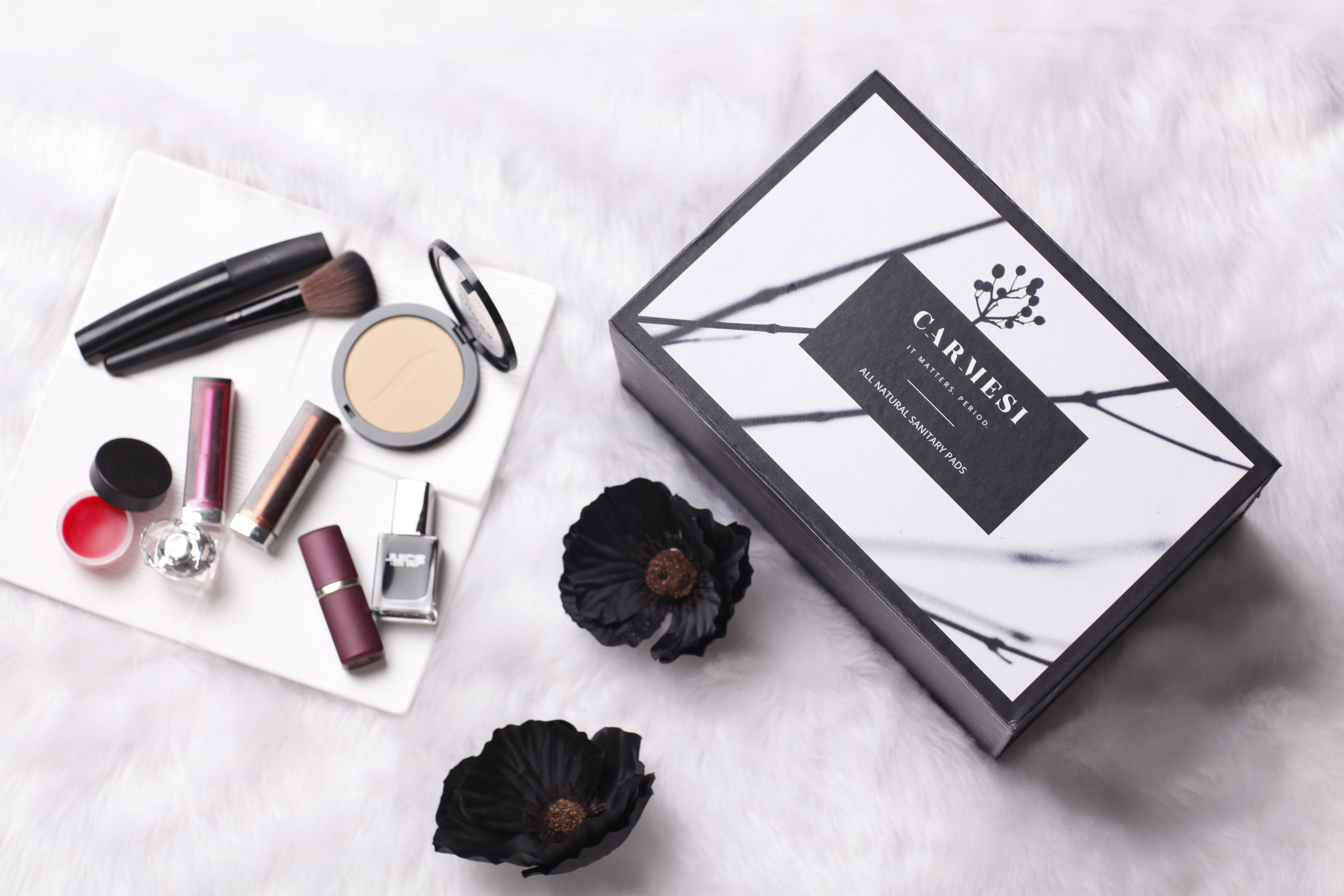
Over the last few years, there has been an increased interest in menstrual hygiene with many entrepreneurs and environmentalists putting focus on the issue and the need for eco-friendly sanitary pads. After all, sanitary napkins are highly difficult to get rid of and often pose environmental and health hazards. Even the February 2018 movie Padman put the spotlight on the issue of menstrual hygiene and made it a talking point among the general public.
Going green
Since the time she started menstruating, Tanvi Johri repetitively faced the issues of rashes and allergies. After trying every brand available in the market, she noticed that nothing truly resolved her problem. Apart from facing health issues, disposing off the soiled pad was also a major concern she had as it required her to carry newspapers and polyethylene bags every time for correct disposal of her soiled pads. “Also I discovered that a lot of women around me related to at least one or the other concern. This exposed an enormous question in my mind concerning the standard of pads available within the market and also a sense of negligence with which the industry players have been treating the general wants and well-being of menstruating women. I decided to make a product that not only is safe and healthy to use and resolves all the concerns and issues of menstruating women,” says Johri who is the founder of Carmesi, an all-natural and biodegradable sanitary pad in India.
Like Johri, there are many women who want to move to chemical-free and eco-friendly options for their benefit and that of the environment. Jaioni reusable pads use upcycled cloth for two styles of pads (Styles means the designs of the pads – It could be Open holder or Closed holder. Open holder is where the inserts go on top of the holder and hence you can see the inserts. Closed holder – the inserts will go inside the holder and hence the inserts cannot be seen). Upcycling lengthens the life of a produced product (here it is the tailor excess) by reusing, reduces waste production and it is an efficient way of recycling. “Jaioni Pads is all cotton material and also comes with wooden coconut shell buttons and there is nothing plastic or non-biodegradable in it. After maximum use of the pads, the pads can be shred into pieces and decomposed or even incinerated or simply used for other purposes if at all. Leak proofs that have been made available. The covers used to package for shipping is a thread meshed paper cover,” says Gayathri, founder, Jaioni. (Jaioni pads are sold as kits. Each kit contains three sets. Each set is one holder and two inserts. They are reusable, if washed and reused they will last 3-4 years) “The initial cost of the reusable pads might seem expensive but in the long run they prove to be more economical. These reusable pads can be used for up to five years with proper maintenance. The monthly expense on disposable pads is gone,” adds Shamala Subramanian, co-founder Jaioni.
Carmesi’s USP is the composition of the product made with corn starch and bamboo fibre. However, they are disposable unlike the Jaioni pads. “We provide a disposal bag with each pad for a hygienic, hassle-free and safe disposal which is the need of the hour. To avoid the last minute runs to pharmacies to fetch your month’s supplies, we offer subscription-based deliveries, tailored to one’s period cycle,” says Johri.
Saathi, a social enterprise based in Ahmedabad, Gujarat manufactures 100 per cent compostable sanitary pads out of locally sourced agro-waste such as banana fibre. They provide an additional source of income for the banana farmers since the waste banana tree material is used by Saathi. “Saathi’s pads can be used like the standard pads available in the market. They are made thin and long for leak proof comfort. The advantages lie in its properties. We don’t use any fragrances to avoid allergies. Our pads are bleach free, so that our customers don’t get itchiness or rashes due to the difference in pH levels. No plastic is used in any layer, making the pads eco-friendly. Even cotton is not used as its farming takes a toll on the soil quality as well as farmer’s income prospects which are diminished with the soil. This also helps to keep the raw material free from pesticide exposure,” says Kristin Kagetsu, co-founder and CEO, Saathi.
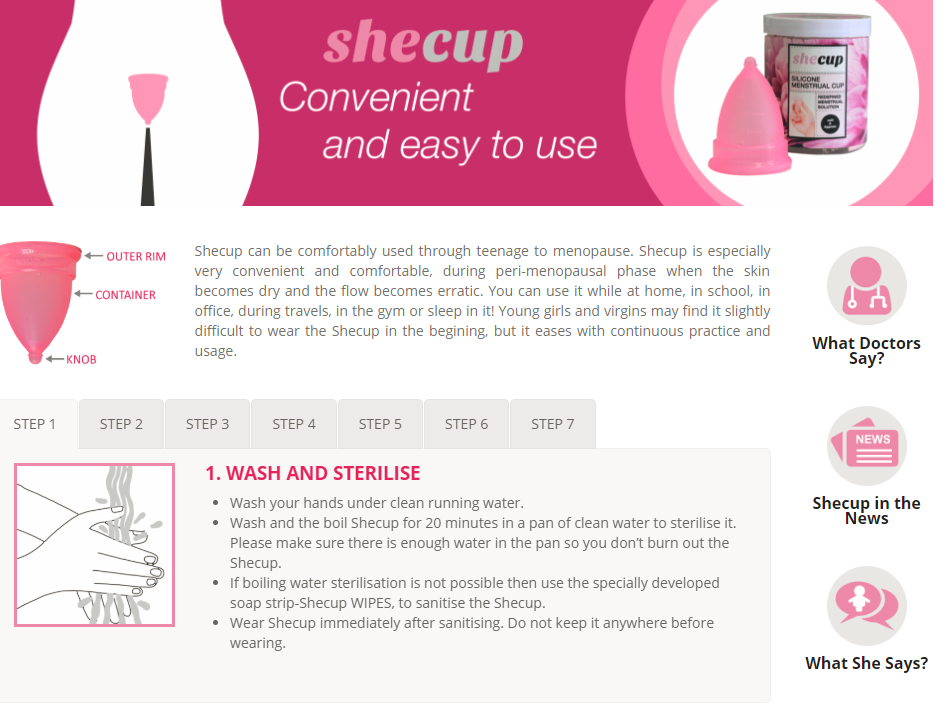
Cups and more
Apart from eco-friendly pads, another alternative that has been gaining popularity is the menstrual cup. The DEA cup, which is a reusable menstrual cup is made from 100 per cent medical grade silicone. The cup, shaped like a bell, is inserted inside the vagina during periods and sits quite low in the vagina. It does not disturb any body functions and in fact allows you to be far more active in physical activities like swimming, cycling, running etc. “The thought process behind DEA menstrual cup is to empower women by giving them an alternative product that can last as long as 10 years. It also strives to make women active participants towards contributing to the environment. Cost efficient and with no risk of infection unlike pads and other products, DEA cups can be used for longer hours. We are working on an awareness drive to break the taboo and the shackles of silence prevailing in the Indian society on menstruation,” says Amol Prakash Mane, founder, DEA Corp.
Likewise, Shecup is designed, developed and manufactured in India and is certified as per US Pharmacopiea and is the only brand globally that has clinical trial reports and is certified by senior gynecologists. “We are a small social enterprise working in the field of Menstrual Hygiene Management (MHM) and promoting sustainable menstruation by advocating the usage of Shecup – Menstrual cup. We lost a close relative to cervical cancer and then started our quest for developing cost effective early diagnostic kits for cervical cancer. While researching on this subject we came across the menstrual cup and also learnt about the complexities around a simple biological process of menstruation, especially in societies like ours. It was then that we took on the cause of menstrual hygiene and got working on developing a menstrual cup,” says Manish Malani, founder director, MediAceso Pvt. Ltd.

Weighing the Pros and Cons
Menstrual cup provides women with an alternative to traditional methods like sanitary napkins and tampoons. Some are long-lasting and reusable, while others are disposable. The cup collects the menstrual flow instead of absorbing it like tampons or pads do and doctors believe there are many advantages of this. “Some cups are designed for long-term use, some are disposable (short term use and dispose). Make sure you read the box label carefully before buying if you want a reusable one. You won’t have menstrual odour, since the fluid doesn’t get exposed to air as it does with pads and tampons. While tampons need to be changed once every four to eight hours, a menstrual cup can be used for 12 hours before emptying. Also with cloth pads, they can be reused only after they are washed neatly and dried in the sun,” says Dr Prabha Ramakrishna, senior consultant and head of department, department of obstetrics and gynecology, Sakra World Hospital. On the flip side, the main disadvantage that women note is that cup removal and emptying can be messy. If you have an intrauterine device (IUD) in place, using a menstrual cup could pull the IUD strings and dislodge it. Sometimes individual anatomy can make proper use of the cup difficult. For instance, if you have fibroids or a uterine prolapse, it may not fit in place properly. Also, after each cycle, you must sterilise the cup using boiling water or a sterilising solution. Dr Shashikala Ksheerasagar, consultant obstetrics and gynaecology, Vikram Hospital Bengaluru adds, “Menstrual cups are more suitable for sexually active and parous women, while the non-plastic fully biodegradable pads can be used by all menstruating women. Apart from occasional vaginitis which may cause discomfort, menstrual cups are well accepted by many women. Once vaginitis is treated, women may start reusing them. Eco friendly pads on the other hand are madeup of 100% biodegradable and compostable material like banana, corn, bamboo or cotton. These pads are sterilized using UV light or ethylene oxide gas and are hygienic. Women should change pad once it is 50% soaked as blood acts like a rich culture media which supports growth of bacteria.”
Dr Kavitha Lakshmi Easwaran, Obstetrician and Gynecologist, Motherhood Hospitals believes that menstrual cups are more hygienic and less troublesome than conventional sanitary pads when used correctly. She states, “Menstrual cups are slowly changing the face of menstrual hygiene. We have found that women had to change the cup, two and a half times less frequently than when using sanitary napkins or tampons. The leakage is also significantly lesser and you can wear it overnight. Due to the collecting nature of menstrual cups, you avoid the risk of getting any bacterial infections associated with use of sanitary napkins and tampons. They are being recommended by doctors across as they are eco-friendly, reusable and economical. As opposed to sanitary napkins, the risks related to the use of menstrual cups are minimal, provided they are used hygienically and carefully. Reusable cloth menstrual pads are a great way to go green and treat your body and your wallet better. A lot of people are put off because they think washing it is very hard, but it is really very easy once you get used to it. You can wash them one of three steps by soaking them first, by rinsing them and then by washing them with your other clothes. You can use whichever method you prefer. We need to keep in mind that washing it regularly is important. Apart from this maintaining regular menstrual hygiene during menstruation is imperative.” A menstrual cup is first folded in and then inserted into the vagina. It unfolds automatically after insertion. One might need to twist the cup to ensure it is properly open. There are certain folding methods to insert the cup. The folding technique you choose will ensure a proper fit.
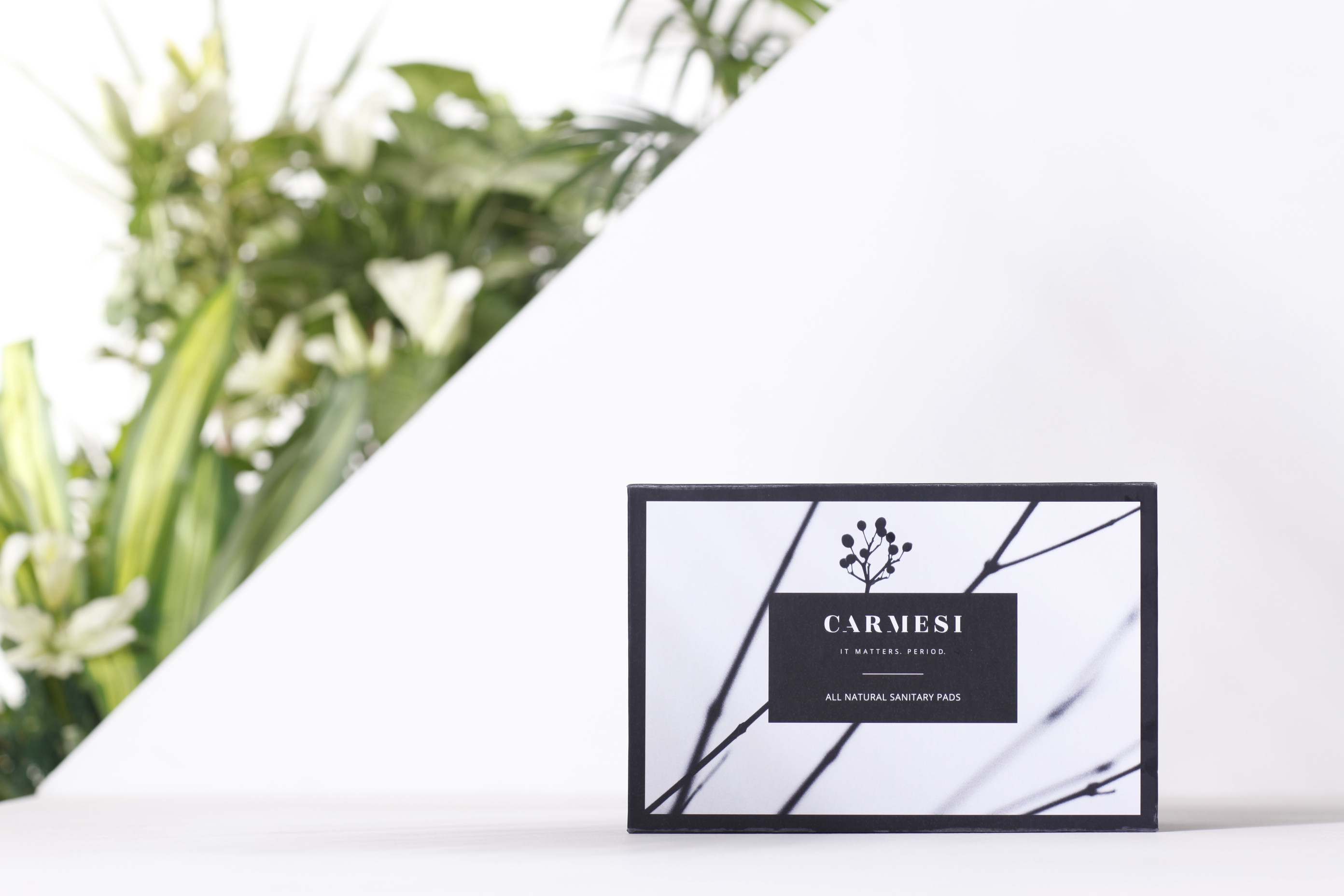
Happy customers
The adoption of cups and eco-friendly pads is slowly gaining momentum. “I had rashes and itchiness after every period which continued for a long time and I started getting UTI infections twice or thrice. I consulted my gynaecologist and she suspected vaginal and urinal infection. When I saw blood in my urine, we tested for kidney infection which had spread due to the UTI. Doctor suggested that I use sanitary pads which don’t contain chemicals. I switched to Saathi pads and for the last three months and I have not suffered from any infection, itching or irritation.” says Komal Umak, 32, an administrative professional from Ahmedabad. Tarun Bothra, co-founder, Chief Technology Officer Saathi adds, “Regular pads contain plastic and chemicals and take more than 500 years to breakdown. The profit from our urban sales is used to subsidise pads for rural women in Jharkhand who earlier had no access to safe menstrual hygiene products.”
Prerna Trehan, a 27 year old PhD research scholar and guest lecturer at Punjab University uses Carmesi pads and says that they are unbelievably comfortable. “They are soft so it does not give me any rashes at all. Also, I try being environmentally conscious but the cups were just not my thing. And then Carmesi came along. It can absorb my flow on bad days, stays soft and provide complete cover to prevent staining.”
An urban woman may be using a whopping 10,000 disposable pads in her lifetime (yes), which means a staggering 58,500 million waste pads are generated in India every year. So, weigh the pros and cons and make the shift to an eco-friendly option.
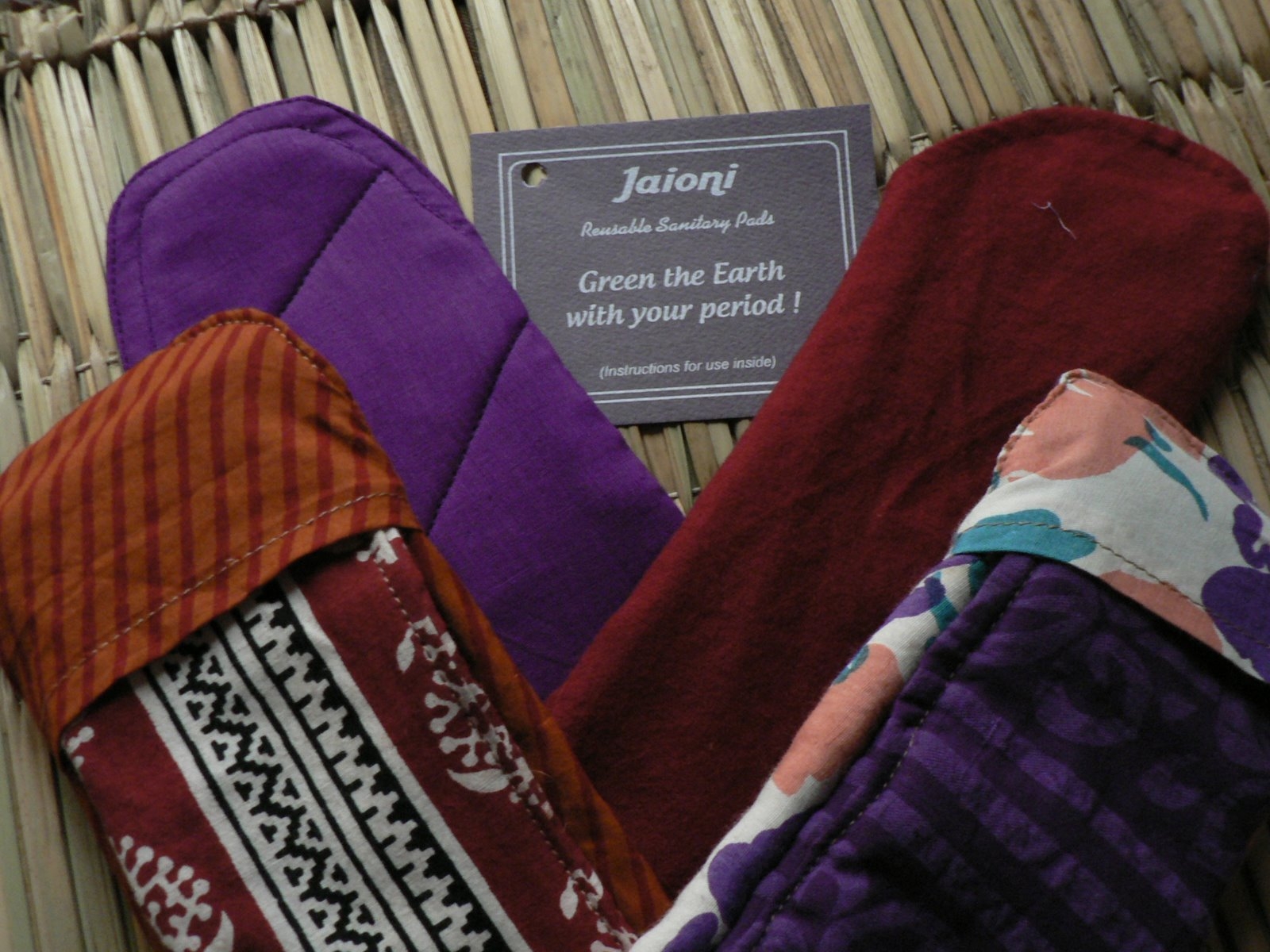
Good to Know
• Suvidha, a 100 per cent oxo-biodegradable sanitary napkin will be available for Rs. 2.50 per pad at over 3200 Janaushadhi Kendras across India under the Pradhan Mantri Bhartiya Janaushadhi Pariyojana (PMBJP).
• Nillory™ is a 100 per cent biodegradable panty liner is made up of FSC certified 100 per cent bamboo and 100 per cent compostable film. Vaidehi Kulkarni, founder Rama Lifescience Pvt. Ltd., Pune says, “maintaining everyday hygiene is as important as menstrual hygiene. Discharges from vagina, urine inconsistencies increase wetness in private parts and if a woman failed to clean it in time, then increased moisture in private parts increases chances of fungal and bacterial infections.”
• World Menstrual Hygiene Day is being celebrated on May 28 as part of the initiative by WASH United (water, sanitation, hygiene).
• Tamil Nadu has installed napkin vending machines in schools and has a free napkin programme for women. Maharashtra offers sanitary napkins to women at Rs 5 while Kerala has a similar ‘She Pad’ scheme.
This story first appeared in Smartlife’s August 2018 issue here:
